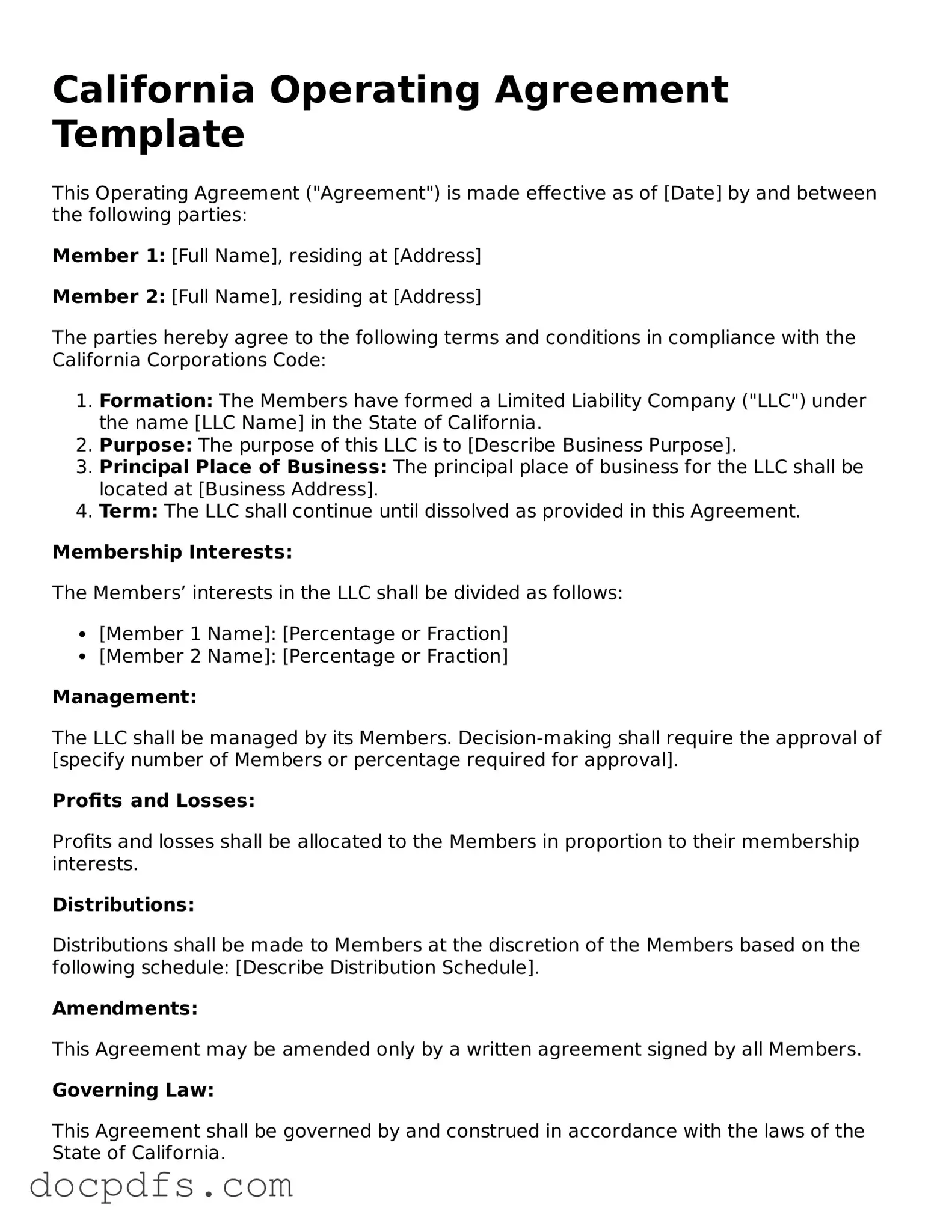Free California Operating Agreement Form
The California Operating Agreement form is a legal document that outlines the management structure and operating procedures of a limited liability company (LLC) in California. This form serves as a foundational agreement among members, detailing their rights, responsibilities, and the distribution of profits. By establishing clear guidelines, the Operating Agreement helps prevent misunderstandings and disputes among members.
Open Operating Agreement Editor Now
